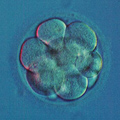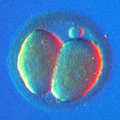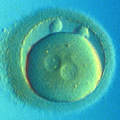Translocations
What are Translocations?
One in every 500 newborns is a carrier of chromosomal translocation. A translocation occurs when two nonhomologous chromosomes exchange their segments. As explained in "Genetics 101" section, out of our 46 chromosomes, we inherited 23 from our mother and 23 from the father. Chromosome 7 from a mother is homologous to the chromosome 7 from a father and nonhomologous to any of the other chromosome.
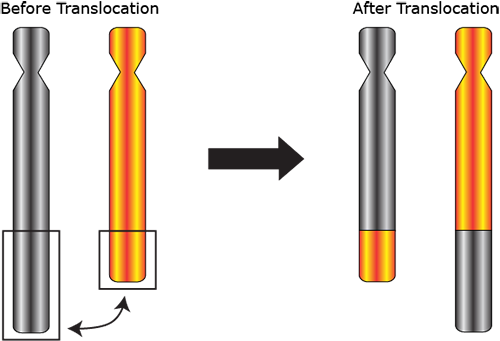
There are two kinds of translocations: reciprocal and Robertsonian. A reciprocal translocation means that two chromosomes swapped their segments, while in a Robertsonian translocation two acrocentric chromosomes fused to form one big chromosome.
Unless, during DNA segment exchange, the breakpoint slices through some important gene, there is no loss of genetic information and no harm is done, but the newborn becomes a translocation carrier. Carriers of translocations may never know that they have this genetic condition until the time comes for them to have a baby.
Fertility Problems due to Translocations
For illustration purposes we are going to use a carrier of a reciprocal translocation. Starting from the zygote stage, and throughout development, the homologous chromosomes never actually meet. They do reside in one nucleus and they do join a single metaphase plate during cell division. However, at the molecular level they are as far apart as two people in a crowd. The one and only time homologous chromosomes come to close and intimate contact is during Meiosis.
During Meiosis an oocyte has to get rid of half of its genetic material, because otherwise fertilized by sperm it will produce a triploid baby in the first generation, a tetraploid baby in the second, and so on. In a process called synapsis, homologous chromosomes are paired together and held by the special synaptonemal complex. Once all 46 chromosomes are paird into 23 pairs or bivalents, the oocyte gets rid of one full chromosome from each bivalent by extruding it into the 1st Polar Body. This is followed by the 2nd meiotic division with the extrusion of the 2nd Polar Body, but the mechanism of this division is similar to any regular mitosis.
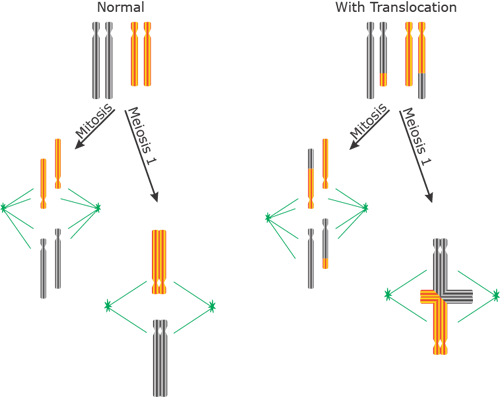
As illustrated in the diagram, this process of meiotic chromosome segregation becomes complicated for the translocated chromosomes. Instead of forming a bivalent, chromosomes with a reciprocal translocation, and their normal homologs, form a quadrivalent. When the time comes to extrude half the chromosomes into the 1st Polar Body, all 4 chromosomes from the quadrivalent may get extruded, or none, or anything in between. 32 different oocytes may result, as illustrated below.
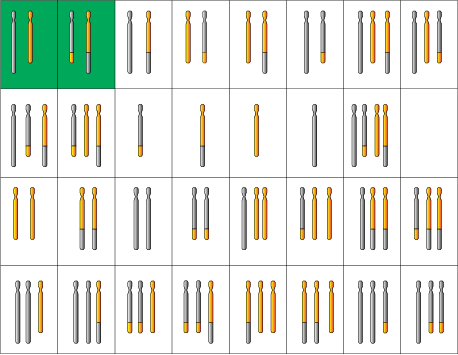
Of the 32 types of gametes only the first two, highlighted in green, are capable of producing a healthy baby. The rest are too genetically abnormal to support normal embryo development.
In general, for the carriers of the balanced translocations the chances to have a normal child on their own is 10% to 60%. As a result, PGD is the only alternative to repeated miscarriages and abortions for a parent with a translocation.



